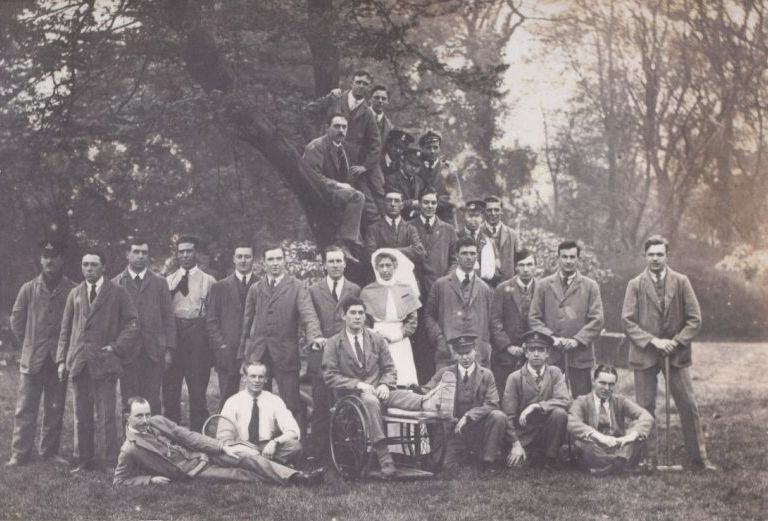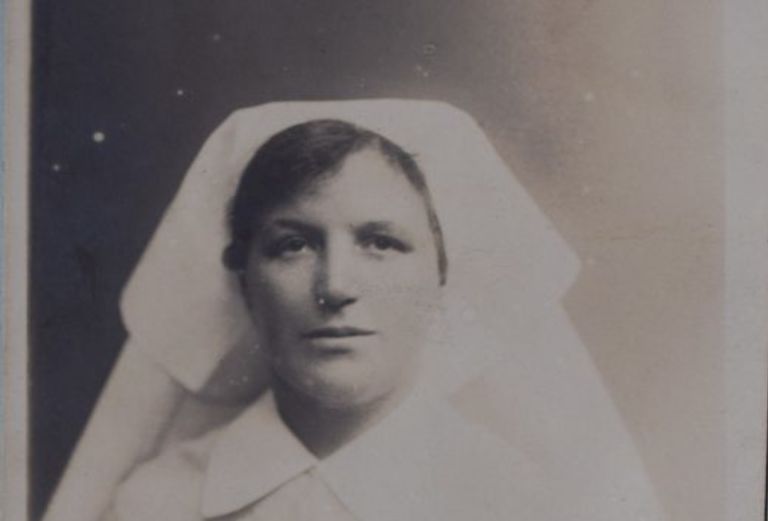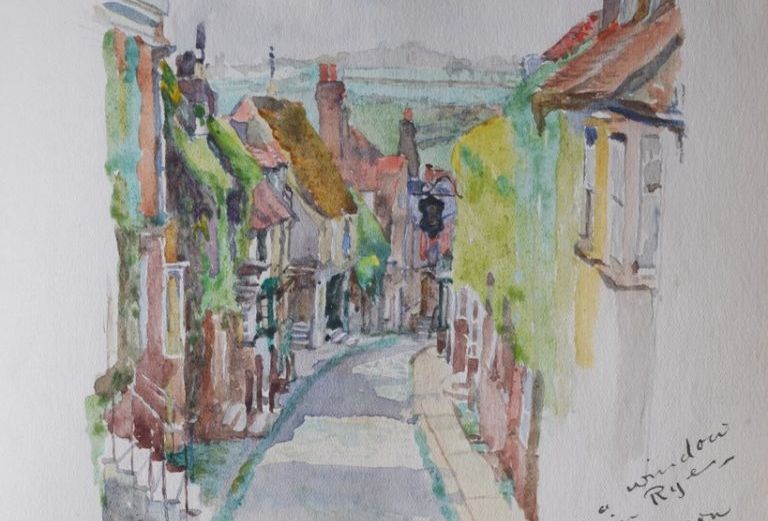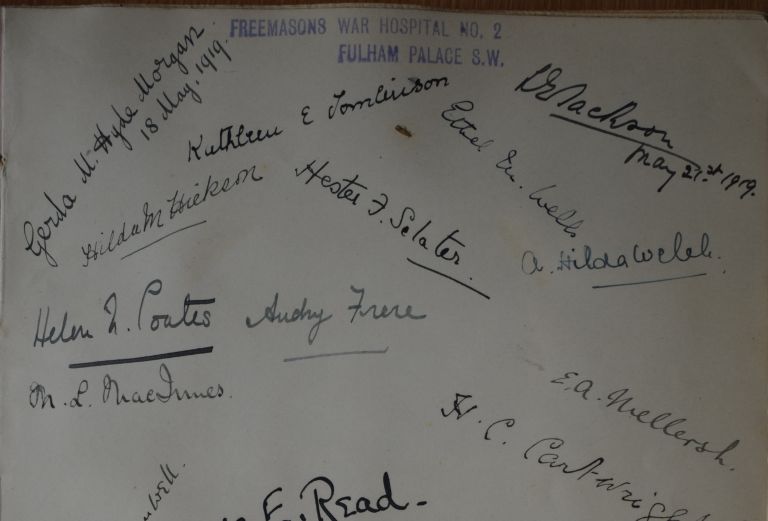
By Alexis Haslam, community archaeologist
One hundred years ago this week a number of very significant photographs were taken at the Palace. At this time the building was nearing the end of its use as a hospital for recuperating soldiers injured in World War One. Handed over by the Bishop and open for only one year between 1918 and 1919, this brief interlude could easily have passed unforgotten into the annals of the Palace’s history.

Fortunately however, a most dedicated and conscientious nurse by the name of Sister Mary Latchmore was resident; and she kept a scrapbook. Now in the possession of the Palace, this wonderful memento of her time at the hospital has provided us with a veritable goldmine in terms of the patients who recovered here and the nurses who worked at Freemasons Hospital No. 2. Our dedicated archive team are currently researching these individuals as we learn more about their backgrounds, the units they served in, the injuries they sustained and the lives they led afterwards.

The role of the nurses is a particularly important aspect, and a recent archive project undertaken by the Royal College of Nursing reveals that the practice of nurses keeping scrapbooks was not uncommon:
As an auxiliary hospital the patients were often less seriously wounded than those in the military hospitals, although it is clear from the photographs that many of them had lost limbs. Numerous patients were also suffering from ‘shell shock’, and the tranquil grounds of the Palace were viewed as an appropriate location for recovery. Methods of assistance appear to have involved encouraging the patients to draw, to compose poetry and to help out in the gardens and on the farm. Identifying areas of the palace in the pictures has been intriguing, and the use of the current Café as ‘Ward A’ is certainly interesting to see.


So, as we glean more information about the likes of Sister Latchmore, V.A.D. nurse Audrey Frere and Sapper Leslie Arthur Condren it is worth remembering that these patients were the lucky ones – they did grow old; although for many the physical and mental wounds they suffered would never truly have healed.